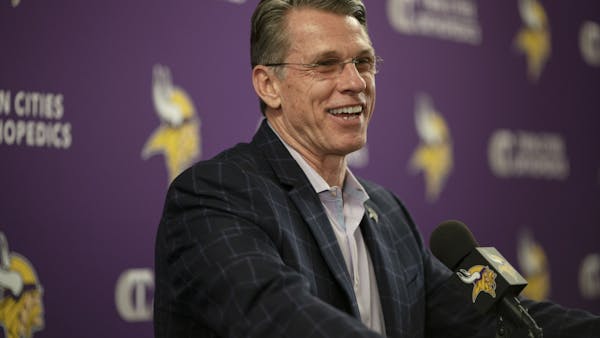Smoke screens and general managers talking publicly while saying absolutely nothing are as much a fabric of the NFL draft as countdown clocks, booing the commissioner and Mel Kiper's hair.
So give Chargers General Manager Tom Telesco credit for cutting right to the chase while welcoming the Los Angeles media to his team's annual predraft news conference earlier this week.
"A lot of you don't want to be here for this because you know I'm not going to say anything," Telesco said. "I don't want to be here for this because I know I can't say anything. So let's try to get through this and have some fun."
Information this close to the draft is pretty much for entertainment purposes only. Accuracy is sketchy, at best.
As for misinformation, well, let's just say there's always plenty of that being planted surreptitiously by teams that take advantage of social media and some of the regular media's ever-growing obsession to say something fast, first and forget about the rest.
"Smoke screens do have a benefit, especially now with today's technology," said former Buccaneers GM and current SiriusXM NFL analyst Mark Dominik. "With all these young players, they go to the facility and tweet out or Instagram out that, 'Hey, I was at this visit today or that visit today.'
"So the one thing I would do with it was if somebody had us [linked to] a player and it wasn't somebody I was considering selecting, I absolutely would still take the time and bring that player in and then make it known that we visited that player, simply for the fact that I wanted to keep people off the scent of who I really wanted to take."
Vikings GM Rick Spielman was asked about the evolution of the 21st century predraft smoke screen during his predraft news conference Tuesday. With tongue firmly in cheek, he tried to play dumb.
"There are no smoke screens," he said with a chuckle. "Everything I read that you guys write is true."
He doesn't sound like a guy who believes any so-called inside information that's reported this time of year.
"But it's entertaining to read, to be honest with you," Spielman said. "Teams could be putting things out there that might not be true but they want it out there. I don't know what other teams are thinking right now. And teams don't know what we're thinking.
"There's a lot of stuff going around this time of year. But we kind of block that out and just home in on what we need to do to help our franchise."
Like all teams, the Vikings spend 12 months a year preparing for the three-day draft. According to Spielman, 90 people in the organization have a hand in the process.
Part of that process is an attempt to know the other 31 rosters as well as the Vikings know their own. In doing so, the Vikings compile an extensive report on every single player on every roster in the league.
That helps them navigate the smoke screens and focus on what they believe a team will do in the draft based on the actual strengths and weaknesses of its roster.
As for whether the Vikings engage in such subterfuge as using one of their 30 visits on a player they're not interested in just to create a smoke screen, Spielman did as any wise GM would do and pleaded the fifth.
"I don't know [if] other teams do that," he said. "And I won't share if we do that or not. There's a lot of games that go on this time of year."
Dominik said he doesn't believe every team uses smoke screens such as using a top-30 visit just to hopefully deceive another team.
"Some clubs are very into whatever happens, happens and we're going to get our 30 visits," he said. "There are tricks to the trade using those 30 visits, and I think using them as a smoke screen is still part of the process."
Mark Craig is an NFL and Vikings Insider. Twitter: @markcraigNFL. E-mail: mcraig@startribune.com

Lacrosse 2024: Boys or girls, discussion begins in the same place

Penn State's starting goalie transfers to Gophers men's hockey

Will 'shotgun only' zone for deer in southern Minnesota be abolished?
NFL draft has potential to set a record for most players on offense selected in the first round

